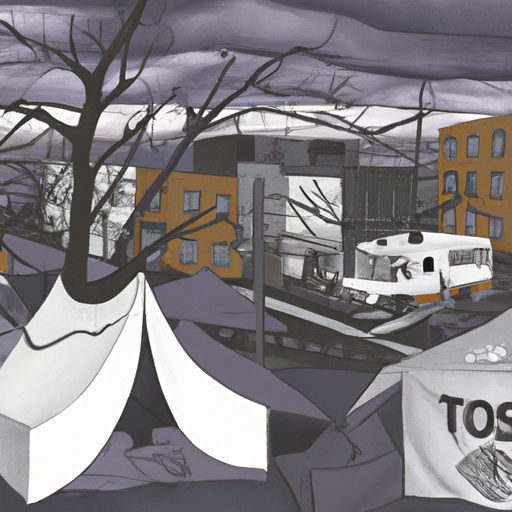Exposing the Deep-Rooted Canadian Opioid Crisis: A Closer Look at a Harrowing Documentary
In a recent documentary from CTV News, the complex and far-reaching impacts of Canada’s ongoing opioid crisis are explored in a deeply human and hard-hitting light. One cannot help but be struck by the staggering magnitude of this public health emergency, especially as it intersects with issues such as homelessness and crime.
Unmasking the Opioid Crisis: The Parallels with Homelessness and Crime
The opioid crisis does not exist in a vacuum; indeed, it has become inextricably linked with rising crime rates and an alarming increase in the homeless population. In Winnipeg alone, it has been reported that the use of opioids, such as the potent and deadly fentanyl, has become an increasing issue, particularly among the city’s homeless population.
Furthermore, the documentary shines a light on the notion that the opioid crisis is fuelling crime in the city – a negative feedback loop of addiction and desperation triggering theft, violence, and other antisocial behaviours. These parallel crises indicate that solving the opioid crisis isn’t just about treating addiction itself but also incorporating strategies that address homelessness and the socio-economic pathogens that give crime its breeding ground.
Efforts to Combat the Crisis: Opioid Class Action and Naloxone
Given the complexity of the opioid crisis, fighting it necessitates a multi-pronged approach. The documentary highlights two significant actions currently underway – the opioid class action suit and the distribution of naloxone kits.
The opioid class action aims to hold pharmaceutical companies accountable for their alleged role in the propagation of Canada’s opioid crisis. This legal strategy stems from allegations that these companies misled healthcare professionals about the addictive qualities of opioids, leading to over-prescription and subsequent misuse.
On the other hand, naloxone, an opioid overdose reversal medication, has been instrumental in saving countless lives. Initiatives are in place to provide free naloxone kits and training to communities, particularly those hardest hit by the crisis. The documentary emphasizes the importance of this life-saving intervention, highlighting how it literally gives those struggling with addiction a second chance at life.
Key Discussion Points
- The opioid crisis intersects deeply with homelessness and crime, exacerbating issues in these areas and making a comprehensive solution more complex.
- The opioid class action suit is a significant move towards holding pharmaceutical companies accountable for their alleged involvement in propagating the crisis.
- The distribution of naloxone kits as an emergency response is saving lives, but it is a reactive rather than a preventive measure.
- The place of crime in this public health crisis demands a joined-up policy response: one that addresses socio-economic equality, housing, and healthcare – all drivers of both opioid abuse and criminal activity.
The Way Forward: Joined-Up Strategies and Solutions
While the opioid class action plays out in court and the distribution of naloxone kits continues, it is evident that further measures are inevitably required to truly eradicate this deadly crisis. Multifaceted problems call for multifaceted solutions. It is essential that strategies include not only grappling with addiction but also tackling the issues of homelessness and crime that feed into and off the opioid crisis.
Conclusions and Takeaways
In conclusion, the documentary starkly portrays the distressing state of the opioid crisis in Canada, showing that opioids are but part of a spider’s web of interlinked issues such as homelessness and crime. It is undeniably a public health emergency, one that calls for a comprehensive, broad-spectrum response spanning public health, law enforcement, social services, and the justice system.
Current efforts, including the opioid class action and the distribution of naloxone kits, are making headway. Still, this crisis needs a continued, united, and relentless effort from all sectors of Canadian society. With enough commitment, compassion, and comprehensive action, it is hoped that Canada can free itself from the grip of this life-shattering crisis.
